Physiotherapy (Physical Therapy) uses manual technique, exercise programmes and electrotherapy to treat a wide range of physical conditions.
Physiotherapy aims to restore normal movement to joints and muscles when injured. In chronic conditions, emphasis is put into restoring functional movement and strength.
Physiotherapy focuses on muscles, the spine, nerves and joints of the body. Core muscles are important in maintaining stability and strength of the upper and lower body. When the base of the body is unstable or weak, the client is likely to develop disorders as a result of the poor core support.
The most obvious benefits of physiotherapy are the anatomical and physiological changes, but which also impact on other elements including the emotional, mental and spiritual aspects of a client’s well being.
What should I expect from a Physiotherapy Consultation?
At your initial consultation, your physiotherapist will ask you a series of questions about your complaint to better understand how it is affecting you and your lifestyle. Following this your physiotherapist will conduct a range of tests to determine where the nature and cause of your complaint is, and how to best treat it. These tests can range from testing your joint range of movement, muscle strength and flexibility, identifying what reproduces your pain, analysis of your posture and palpation of specific parts of the body.
The assessment is followed by a discussion with you as to the goals and plan for treatment, what is expected and your contribution to the process. Once this is agreed on, the physiotherapist will proceed to treat you using advanced skills and techniques.
Subsequent assessments and treatments will involve similar testing and review of your progress and how you are feeling, to best provide you with the most effective and ideal treatment for your complete recovery.
At Kardinya Physiotherapy Perth, each client receives an individualised tailored plan. This may include any or a combination of manual, exercise and electrotherapy, lifestyle modification, and even basic nutritional advice. For long-standing or significant musculoskeletal problems, a number of visits may be required and the therapist will reassess the client’s problem and the rate of progress, often modifying the treatment plan and techniques used along the way.
Who can benefit from Physiotherapy?
Almost anyone who suffers from chronic and acute muscular or joint pain in the back, limbs, those who have headaches, arthritis, fibromyalgia, osteoporosis, multiple sclerosis and those who are recovering from injuries may find physiotherapy to be more effective than over the counter pain relievers and medicines.
Physiotherapy Techniques
Manual Technique
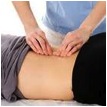
- Mobilisations and Manipulations for joints to increase movement and flexibility and reduce pain
- Massage Therapy for soft tissues to help relieve swelling, reduce muscle spasms, improve circulation and ease deep seated pain.
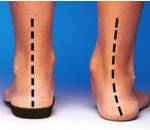
- Orthotic Prescription to adjust postural weaknesses and limitations
- Brace Prescription for support and injury prevention
- Heat Therapy to increase circulation, reduce pain and swelling
- Cryotherapy to reduce and prevent swelling and reduce pain
- Dry Needling and Acupuncture for relief of pain
- Trigger Point Therapy for relief of pain
- Strapping and Taping for protection and support
- Post Surgical Rehabilitation for accelerated recovery
Exercise Prescription
- Hydrotherapy exercise in water where the flotation effects of water reduce joint stress and allow improved movement
- Exercise Therapy to increase movement, strength, stability, balance and co-ordination
- Exercise Classes to bring together like minded individuals with similar limitations so they can feel supported and motivated towards their common goal
- Core Training to increase stability and prevention of injury

- Pilates to increase core strength
- Fit Ball Exercises a fun way to increase core stability
- Proprioception Exercises to get an enhanced joint position sense to prevent injury

- Stretching for muscle flexibility and increased joint range
- Ergonomic Assessments to assess work and home stations and/or ways of holding postures or moving during activities of daily living, and to modify them to optimal positions to prevent physical stress.
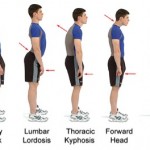
- Posture Correction to optimise spinal, core and peripheral posture, gait and movement
- Gait Analysis to normalise gait and coordination
- Personalised Computer Generated Exercise
We provide you with a Program so you have a reminder of exercises to do at home
Electrotherapy
Various forms of electrical energy beneficially affect body tissues. Some of these effects are advantageous in promoting healing and reducing swelling. These include ultrasound, interferential and T. E. N. S.
Ultrasound Therapy
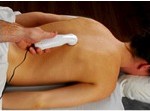 Ultrasound is used to speed up the healing process by increasing circulation through molecular vibration. This enhances cell repair effects especially when inflammation is present.
Ultrasound is used to speed up the healing process by increasing circulation through molecular vibration. This enhances cell repair effects especially when inflammation is present.
Interferential Therapy
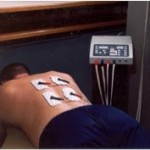 Use of a mid frequency current to treat muscular spasms and sprains. This treatment has a massaging intermittent effect which stimulates the release of endorphins, the body’s natural pain relievers. This effect relaxes muscles and promotes soft tissue healing.
Use of a mid frequency current to treat muscular spasms and sprains. This treatment has a massaging intermittent effect which stimulates the release of endorphins, the body’s natural pain relievers. This effect relaxes muscles and promotes soft tissue healing.
T. E. N. S.
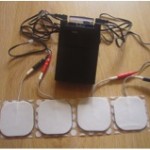 Transcutaneous Electrical Nerve Stimulation.
Transcutaneous Electrical Nerve Stimulation.
The electrical current produced by this device is useful in blocking pain. It consists of a small box to which 2 or 4 leads are attached. Each lead attaches to an adhesive electrode which is applied to the client’s skin. The client feels a tingling sensation which is neither painful nor uncomfortable. Its effect is similar to interferential therapy. These devices can be hired or purchased for home use.

